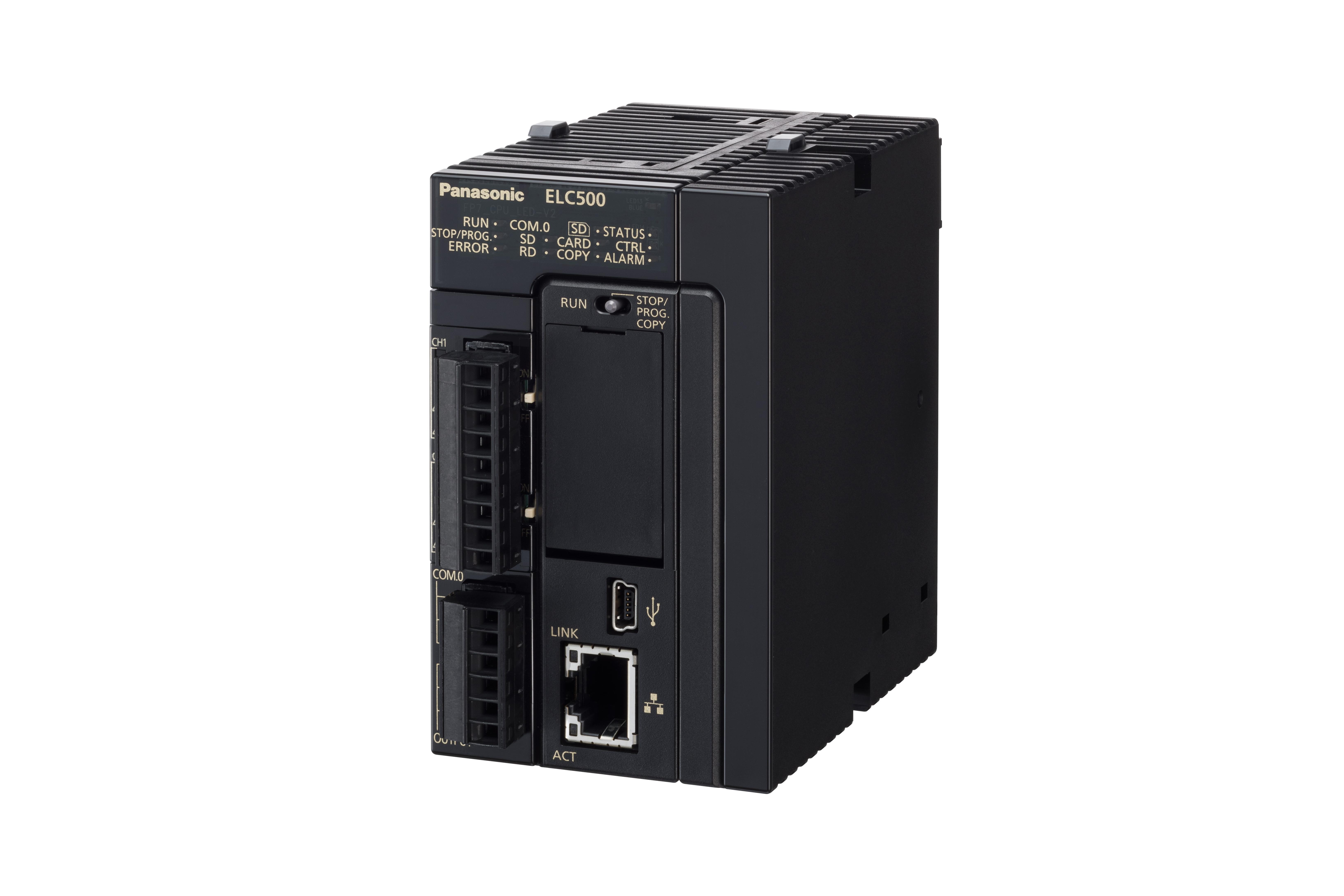Osaka, Japan - Panasonic Corporation started mass production of the Control Unit ELC500 from September 2018. This product collects and stores energy use data and equipment operation information through Ethernet and easily enables their visualization. It allows the incorporation of IoT in factories and equipment to help optimize energy use and improve productivity.
With the globally accelerating progress in the dissemination and development of IoT systems, production sites are increasingly eager to collect, store, and visualize energy data and data from sensing devices to help contribute to resolving management issues. In response to the need to incorporate IoT at manufacturing sites, Panasonic has commercialized the Control Unit ELC500, which easily collects data via Ethernet (*1) and enables remote equipment monitoring using Web servers. This product is compatible with the demand control overseas as well as in Japan.
*1 Ethernet is a registered trademark of Fuji Xerox Co., Ltd. and Xerox Corporation in the U.S.
Panasonic's Control Unit ELC 500 has the following features
Does not require dedicated programs, achieves data collection and storage via Ethernet, and contributes to the reduction of engineering work-hours
Panasonic's conventional products: Data collection and storage using serial communication
Contributes to improving productivity by enabling remote equipment monitoring using Web servers and Web content customization
Panasonic's conventional products: The Web server function requires a programmable controller (Product Number: FP7).
Compatible with demand monitoring/control in Japan and overseas, thereby contributing to the promotion of factory energy saving around the world. Also compatible with gas the demand monitoring/control in Japan
Panasonic's conventional products: Only compatible with constant-cycle demand.
Product features
Does not require dedicated programs, achieves data collection and storage via Ethernet, and contributes to the reduction of engineering work-hours
By using its own unique algorithm, this new operability (UI)-conscious product collects data at high speeds from terminals (power meters, sensors, and others) connected to multiple communication paths and also enables logging operation. It does not require dedicated programs and enables settings using the PC software "Configurator EL500"(*2),; thereby reducing the time required to produce and verify programs (*3).
*2 Available for free download from Panasonic's web page indicated below. (Member registration is necessary.)
https://www3.panasonic.biz/ac/e/fasys/software_info/eco/tol_config_el500.jsp
*3 Reduces the time required to produce and verify ladder programs using programmable controllers, etc.Contributes to improving productivity by enabling remote equipment monitoring using Web servers and Web content customization
The Web server function enables the real-time monitoring of equipment and devices and remote monitoring using smartphones, tablets, and PCs. In addition, the use of an optional tool (*4) (sold separately) allows even users without HTML knowledge to easily design web content that can link with the ELC500's information. For example, arbitrary web content can be produced by arranging web parts such as switches, lamps, and meters on the screen and setting properties.
*4 The drawing tool Control Web Creator released for the ELC500 (Available for free as a download from Panasonic's web page. Member registration is necessary) and the license key unit of the Control Web Creator.
Compatible with the demand monitoring/control in Japan and overseas, thereby contributing to the promotion of factory energy saving around the world. Also compatible with the gas demand monitoring/control in Japan.
Its compatibility with the demand time span monitoring used overseas, in accordance with the IEC 61557-12 international standard, in addition to its compatibility with constant-cycle demand (30 min) enables widespread use at factories around the world. The significantly shortened interval of demand monitoring, previously one minute - now five seconds, also allows prompt response to devices' sudden load fluctuations. Moreover, the product is now has gas demand monitoring/control functions.
[Demand type]
- Constant-cycle demand
Demand time span: 15 min, 30 min, 60 min
Demand forecast method: Average power method, moving average method, high-speed moving average method
Alarm level setting: Three levels
Alarm update cycle: 1-min cycle, 5-sec cycle (High-speed moving average method only) - IEC demand
Demand time span: 1 min - 60 min (arbitrary setting)
Interval time: 1 min - 60 min (arbitrary setting)
* Compatible with the sliding block interval and fixed block interval
Suitable applications
Collection and storage of power data/equipment operation data, demand control, etc.
Sales area
Global
# # #
- Disclaimer:
- We would like to note that Panasonic Newsroom is not a place to address personal Customer Service issues. Even though this is not the forum, Panasonic is always eager to resolve your concerns. Our local customer services contacts can be found at Global Support or you can see our list of Social Media Accounts to find the right channel for your queries and concerns.






![[Video] Panasonic HX in Action: Demonstrating Hydrogen Solutions in Europe](http://news.panasonic.com/uploads/tmg_block_page/cover_image/18213/hx-video-main.jpg)






